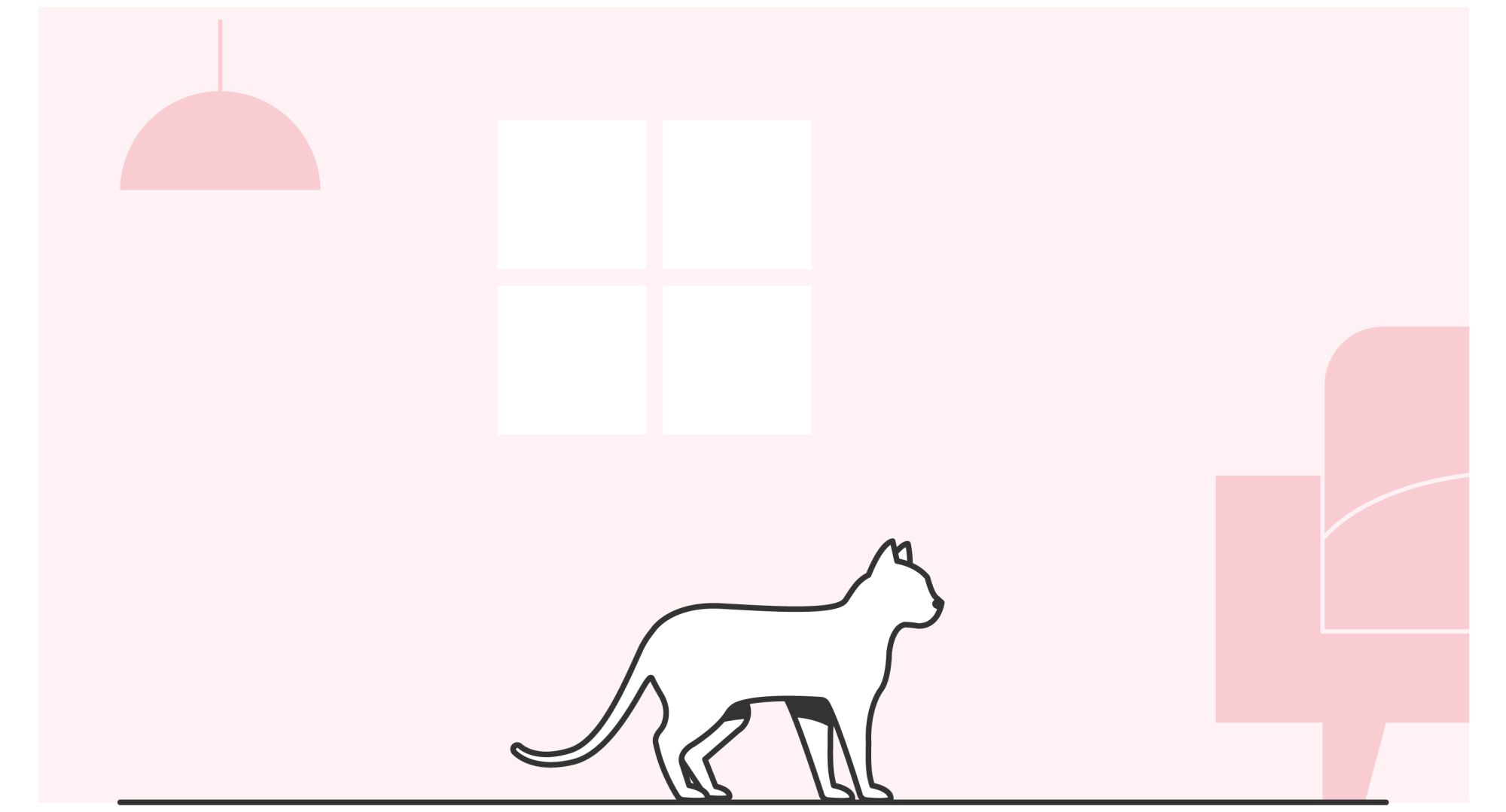
Understanding your cat's ideal weight and body condition is essential. Knowing what an ideal cat body condition score looks like will make it easier to spot any irregularities in their weight. This can help you discuss the next steps with your veterinarian to get them back to a healthy weight.
If your cat is at a healthy weight they will be less likely to have weight-related health issues in the future.

You may not have previously thought about assessing your cat's body condition and weight at home, however, maintaining an ideal weight may help increase their lifespan.
If you regularly monitor your cat's body condition and weight it will be easier to identify when you should seek advice from a veterinarian if there is a noticeable change.
Alongside weighing your cat, using a body condition score is one of the easiest methods to understand whether or not they are at a healthy weight. Normally used by veterinarians, it is a technique that can also be easily used by pet owners at home. Remember, it's important to discuss your cat's body condition with your veterinarian.
How to use a body condition score
A cat body condition score involves looking at their body from above and the side to assess whether they are an ideal weight. As you need to feel their body and look at their shape, you will be able to assess whether they are at a healthy weight more accurately than when only looking at the number on the scale.Cat body condition scores use a 9-point system to assess weight. The score starts at 1, indicating your cat is severely underweight and goes up to a 9 at the other end of the scale, which points to severe obesity.
An ideal body weight according to the score is marked as a 4 or 5. This means you can easily feel their ribs, identify a visible waist from above and can see their abdomen tuck up behind their rib cage when looking at your cat from the side.
Measuring your cat's body condition score
Follow our easy-to-use cat body condition score below to understand whether your cat is underweight, overweight or at an ideal weight.
Step 1 - Look
Step 2 - Feel
Step 3 - Weigh
Cat body condition score 1 - 9
A cat body condition scale ranges from 1 to 9, with 1 indicating a cat is severely underweight, to 9 meaning severely obese. A cat is considered to have an ideal body condition if they score between 4 and 5. Assessing your cat's body condition score is easy to do and can be done while petting your cat.Check your cat's weight on an appropriate scale. Once you have assessed their body shape and body condition score, knowing their weight will provide a well-rounded view of your cat's body condition. Your veterinarian will be able to address your cat's nutritional needs based on their current and ideal body condition.
Underweight cat - body condition score 1 - 3
Score 1: Severely underweight
What to look for
- Clearly visible ribs, spine and pelvic bones, particularly on shorthaired cats
- Extremely narrow waist
- No visible fat on their rib cage
- When viewed from the side, their abdomen appears severely tucked up behind their rib cage
Score 2: Underweight
What to look for
- Ribs are easily visible on shorthaired cats
- Narrow waist
- No visible fat on their rib cage
- When viewed from the side, their abdomen appears prominently tucked up behind their rib cage
Score 3: Too thin
What to look for
- Ribs visible on shorthaired cats
- Obvious waist
- A very small amount of abdominal fat
- When viewed from the side, their abdomen appears tucked up behind their rib cage
Why is my cat underweight?
Ideal cat weight - body condition score 4 - 5
Score 4: Ideal
What to look for
- Ribs are not visible but can be easily felt
- Obvious waist
- A minimal amount of abdominal fat
- Slight abdominal tuck when viewed from the side
Score 5: Ideal
What to look for
- Well proportioned body when viewed from above and from the side
- Ribs not visible but can be easily felt
- Obvious waist
- A small amount of abdominal fat
- Slight abdominal tuck when viewed from the side
My cat is a healthy weight
Overweight cat - body condition score 6 - 9
Score 6: Above ideal
What to look for
- Ribs are not visible but can be felt
- Waist not clearly defined when seen from above
- Very slight abdominal tuck when viewed from the side
Score 7: Overweight
What to look for
- Ribs are difficult to feel under the fat
- Waist barely visible
- When viewed from the side, their abdomen does not appear tucked up behind their rib cage
- Rounding of the abdomen
Score 8: Obese
What to look for
- Ribs cannot be felt under the fat
- No visible waist
- Slight swelling of the abdomen
Score 9: Severely obese
What to look for
- Ribs cannot be felt and are under a thick layer of fat
- No visible waist
- Obvious swelling of the abdomen
- Extensive abdominal fat
Is my cat overweight?
Still unsure about an ideal cat weight?
Once you have assessed your cat's body condition score, speak to your veterinarian for advice on the next steps. If you're unsure how to interpret your cat's body condition, your veterinarian will also be able to help with this.
Your veterinarian can then suggest appropriate weight management options, which may include encouraging regular physical exercise or changing to a weight management diet. Ask your veterinarian if a Satiety Support Weight Management diet is suitable for your cat.